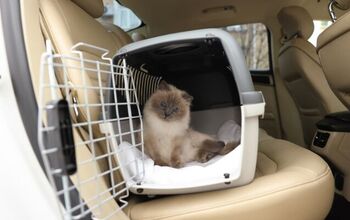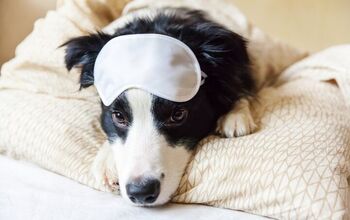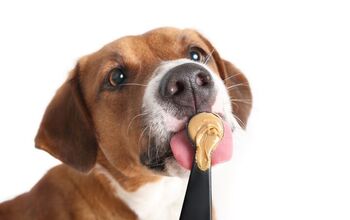Canine Malocclusion: Dogs With Underbites

Many dog owners underestimate the importance of dental health in their dogs. Though you may think it’s normal for a dog to have yellow teeth and bad breath, it isn’t – periodontal disease is just as common and just as serious in dogs as in humans. Another dental issue that many dog owners overlook is canine malocclusion – keep reading to learn more.
What is Malocclusion in Dogs?
A dog with a healthy set of teeth should have a scissors bite – a bite where the upper incisors overlap with the lower incisors, the lower canine fitting between the upper third incisor and upper canine. Just like humans, dogs develop baby teeth when they are young and those teeth are eventually replaced by adult teeth.
Related: Periodontal Disease in Dogs
Most puppies have 28 baby teeth that grow in by the time the puppy is 6 months old. As an adult, most dogs have 42 adult teeth. If the baby teeth don’t grow in properly, or if the adult teeth start to come in before the baby teeth are gone, the teeth might become misaligned – this is known as malocclusion.
A misalignment of teeth may seem like nothing more than a cosmetic issue, but it can lead to some health problems. Here are some of the problems that can arise from canine malocclusion:
- Injuries to the mouth and gums
- Increased risk for periodontal disease
- Damage to the soft palate, soft tissue defects
- Excess wear on the teeth
- Fractures to the teeth
Related: 6 Ways To Keep Your Dog’s Teeth Clean
Depending on the severity of the malocclusion, some dogs may also have trouble picking up food or chewing. They may only be able to pick up and eat larger pieces of food. Canine malocclusion can be classified in different ways but here are the main options:
- Overbite – Also known as overshot, this is when the dog’s top teeth overlap the bottom.
- Underbite – Also known as undershot, this is when the dog’s bottom teeth overlap the top.
- Open Bite – This is when the dog’s front teeth fail to meet when the dog’s mouth is closed.
There are other versions of malocclusion as well including anterior and posterior crossbites where some of the teeth are in the proper position but others overlap. Any dog can develop malocclusion, though it is normal for certain breeds to have a non-scissor bite – these include Boxers, Lhasa Apsos, and Shih Tzus. Brachycephalic breeds like Pugs and Bulldogs have a higher risk for developing an underbite, as do Boston Terriers, Pekingese, and Cavalier King Charles Spaniels.
In many cases, it is not necessary for a dog to undergo any sort of treatment for malocclusion as long as he is still able to eat. In cases where malocclusion results from physical trauma or when it impacts the dog’s ability to eat, there are surgical options to consider.
Your dog’s dental health is important, so be sure to talk to your veterinarian about any concerns you may have regarding your dog’s teeth. If you notice your dog developing an overbite or underbite, it may not be cause for concern but it never hurts to have it checked out.

Kate Barrington is the loving owner of two cats (Bagel and Munchkin) and a noisy herd of guinea pigs. Having grown up with golden retrievers, Kate has a great deal of experience with dogs but labels herself a lover of all pets. Having received a Bachelor's degree in English, Kate has combined her love for pets and her passion for writing to create her own freelance writing business, specializing in the pet niche.
More by Kate Barrington























